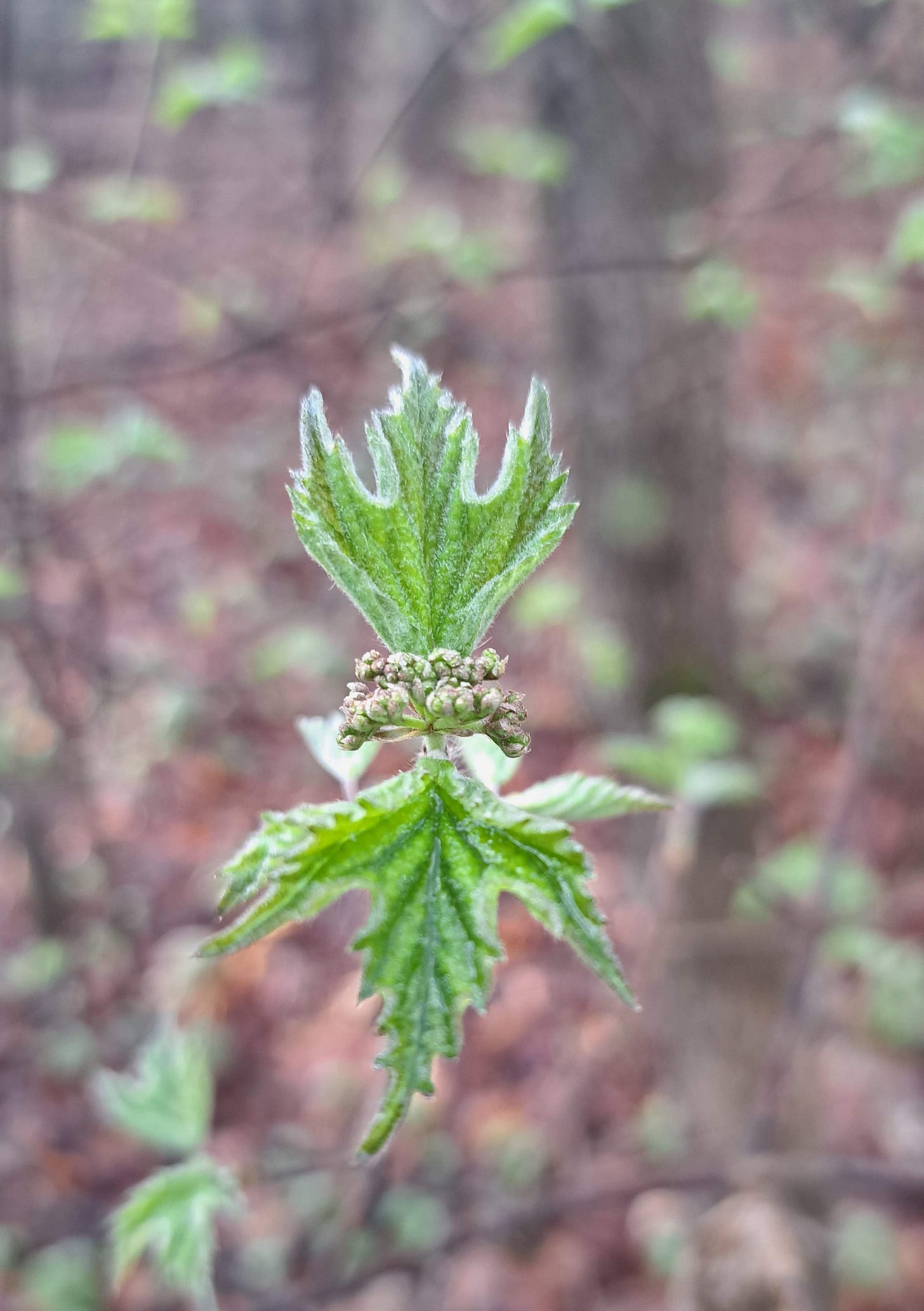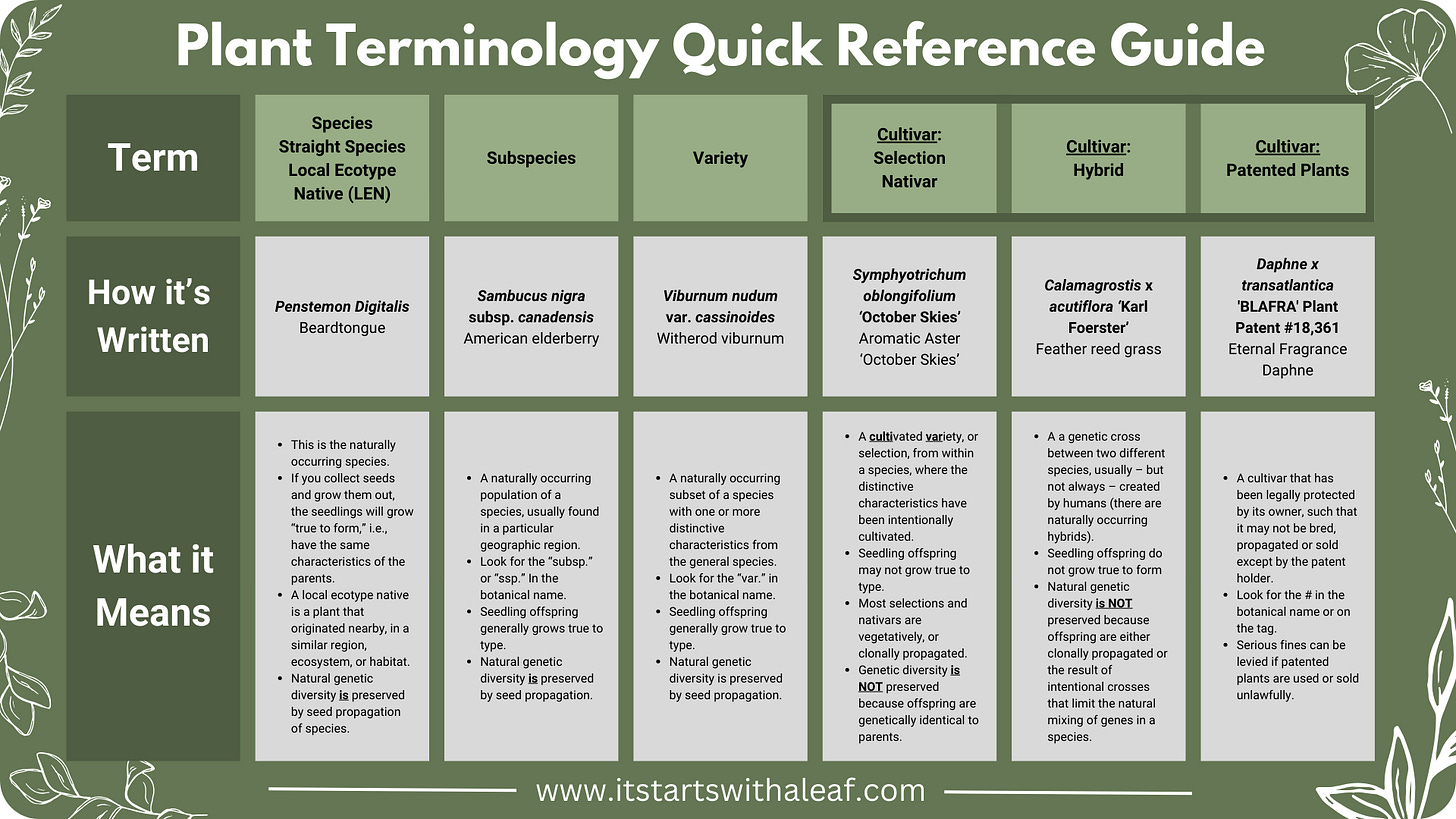Is it Really Native? How to use BONAP to research native plants
Step 3 in How to find the best native plants for your garden
Hello my fellow ecological gardening friends! Spring is springing and it’s the very BEST time of year, if you ask me. I love spring because warmer temperatures feel nice, and all of the new growth and new possibilities that lie ahead are like gifts waiting to be unwrapped. I love that smells return after a winter of dullness, and adore hearing birds singing in the mornings again. Daylight Saving Time? Hallelujah. And since greeeeeeeen is my favorite color, well…spring’s got it going on! Who’s with me?
Setting the scene
OK, so it’s springtime and you’re giddy with gardening zeal. You’re passing a garden center and the car seems to swerve itself right into the parking lot. Suddenly, you’re standing in front of a display of “native” plants, cooing over this, that, and the other thing. All of the plants are fulsome and bursting with colorful leafiness. You want that plant.
But then you remember your goal of adding more native plants to your garden this year, and you think to yourself, “hmm, I wonder if this is truly native to my area?”
Friend, I have been there so many times.
Early in my native gardening journey, I simply looked for a sign or a tag that said “Native,” and went with it. After all, there have to be truth in advertising laws, right? And those guys at the nursery are the pros, right? Well…yes and yes, BUT.
The problem: Whose “native” are we talking about?
It seems like everyone has their own definition of “native” - after all, every plant is native to somewhere. Maybe it was native where it was grown, but not where it is being sold. Or maybe the term “native” is being used loosely, as in, native to North America - which is not super meaningful; let’s be honest. Or maybe it’s regionally native across a five-state area, but in nature only occurs, say, along the coastal areas.
To my knowledge, there aren’t any laws or standards that govern how plants are labeled with respect to their nativity. (However, my home state of Virginia finally just managed to pass a law that requires invasive species to be labeled as such, accompanied by signs encouraging customers to seek native alternatives. Yay!)
And frankly, we DO all have differing concepts and views about nativity, as well as what “counts” and what doesn’t. One person might consider only local ecotype native plants grown from seed within the same ecoregion to be native (this would be just about the purest definition). Another person might consider any species that grows in their county to be native, but be willing to buy plant material that comes from out of state. You see where I’m going with this: there are a lot of different angles to take, and shades of green to consider.
Enter BONAP, a quick way to search your plant in question
The Biota of North America Program, or BONAP, is a wonderful resource to help you discover the nativity of any plant species in North America1. BONAP is run by Dr. John Kartesz of the North Carolina Botanical Garden, and his staff. It is a geographical database of plant records, with color-coded maps that show where plants can be found and whether they are native, exotic, or adventive, and whether they are rare, extinct, extirpated, noxious, or eradicated.
The great thing about BONAP is that it is easy to search for a plant and quickly get to a result.
Two important caveats:
You need to know the botanical name for the plant.
Don’t try to search on the BONAP website itself; simply use Google or your preferred search engine.
So, to quickly find out whether the magnolia you are eyeing at the nursery is native to your area, first check the tag and note the botanical name. Quick review: You’ll see a two-word name in italics, such as Magnolia virginiana. Here, Magnolia is the genus, and virginiana is the specific epithet. Together, they form the species name. (There are exceptions and variations to this nomenclature2, but for now let’s assume this is what you are dealing with.)
Now, go to Google on your phone and just enter “Magnolia BONAP.” The first result that usually comes up is the one you want, an entry for Magnolia with a colorful little map thumbnail:
When you open the link, you’ll see tiled maps on a page. You need to know the particular species - in this case, Magnolia virginiana. Now scroll to the tile labeled with that species and tap on the map to enlarge it.
Find your state and county and note the color on the map.

How to interpret the BONAP maps: Only light green means native in your county!
This is where it gets just a little bit tricky. Every BONAP map page has a link at the top that says “Map Color Key” - use this!! Read it as often as you need to in order to understand what you are looking at.
Here is the basic explanation given on the site:
We only have TWO state-background-colors, dark green (native) and dark blue (exotic). If a species is NATIVE TO THE North American continent, state-background color is dark green, lF EXOTIC, state background color is dark blue. All other colors including; teal, yellow, pink, red, black, etc., pertain to nativity of the individual state and its counties.
So, to further explain: States in dark green mean that the plant is native SOMEWHERE in that state, but only present in bright green (not rare) or yellow (rare) counties. So, you are really looking for that bright green color to indicate that the plant is native in your county. (Brown means the plant doesn’t grow there in the wild.)
That’s it in a nutshell! Google the plant genus + BONAP, find the particular species map, and then look to see if your county is light green, meaning that the plant is native to your area.
Google the plant genus + BONAP, find the particular species map, and then look to see if your county is light green, meaning that the plant is native to your area.
I hope this helps the next time you find yourself wondering whether a plant is native or not in your area! Of course, as I discussed last week, counties are not ideal map units when you want to do a deep dive into native plant communities. However, they have been used as convenient boundaries for collecting and maintaining plant records at our academic and administrative institutions, so for a quick and dirty search, BONAP is extremely convenient.
Let me know in the comments if you have used BONAP, or if you think you will in the future!
Source citation: Kartesz, J.T., The Biota of North America Program (BONAP). 2015. Taxonomic Data Center. (http://www.bonap.net/tdc). Chapel Hill, N.C. [maps generated from Kartesz, J.T. 2015. Floristic Synthesis of North America, Version 1.0. Biota of North America Program (BONAP). (in press)]
See my handy dandy Plant Terminology Guide below for a quick explication of plant naming, and read my blog article for details:






I have never used BONAP, but I will be from now on! Thank you!
I love BONAP! This is a very useful article and well written.